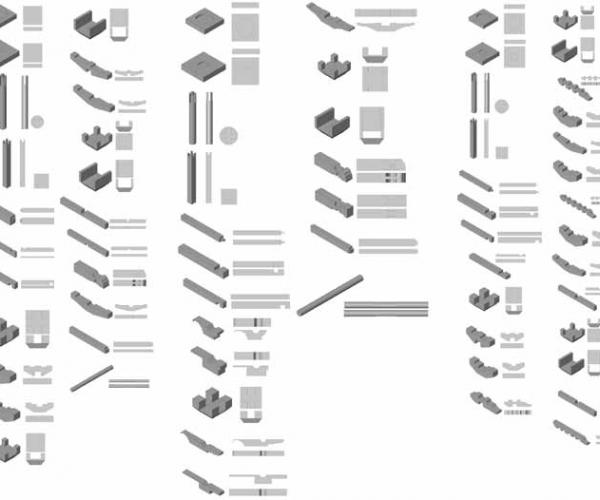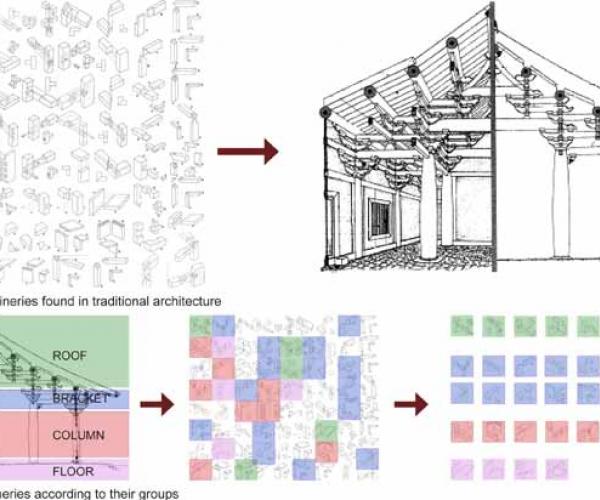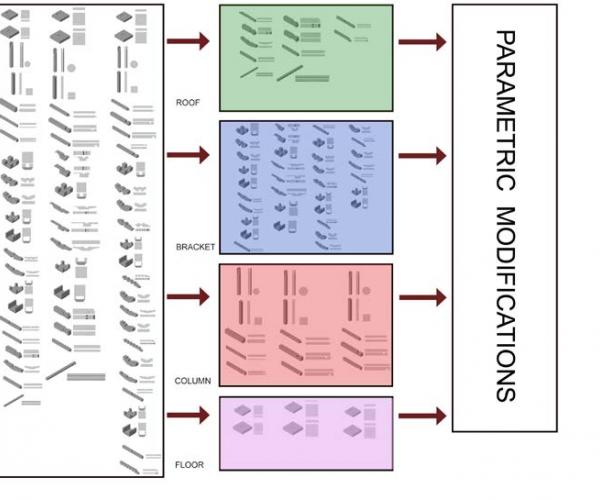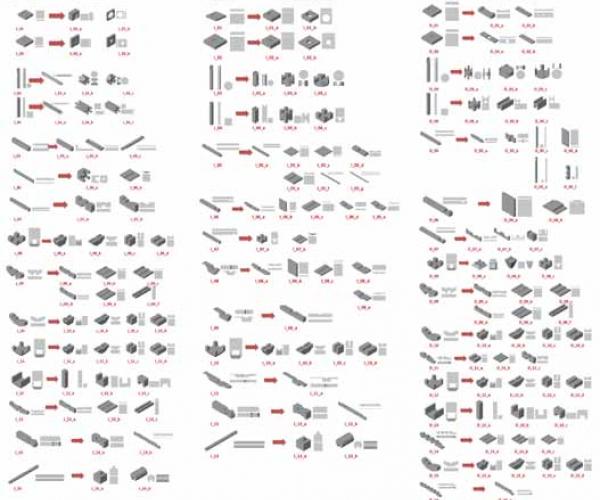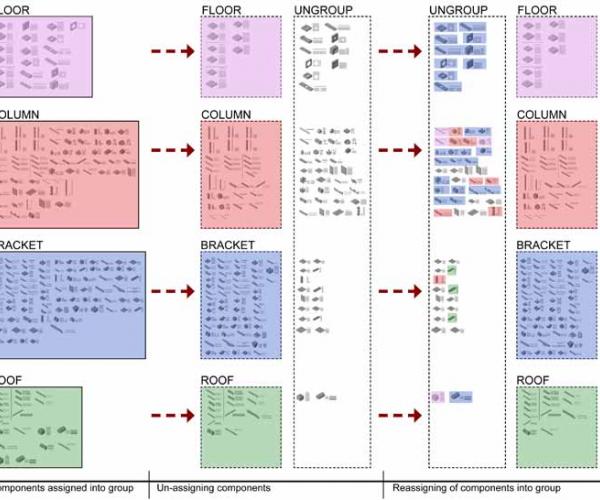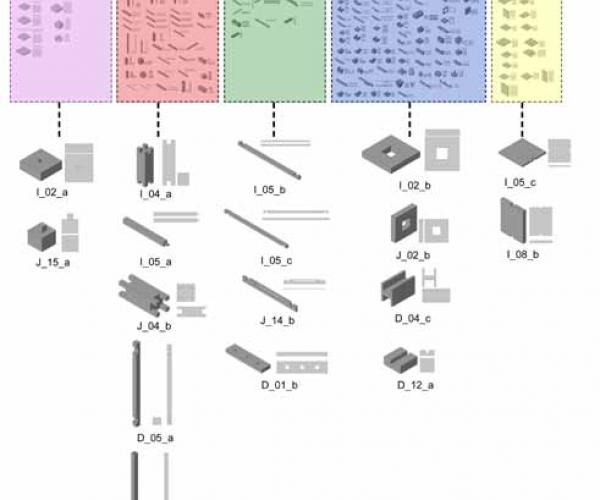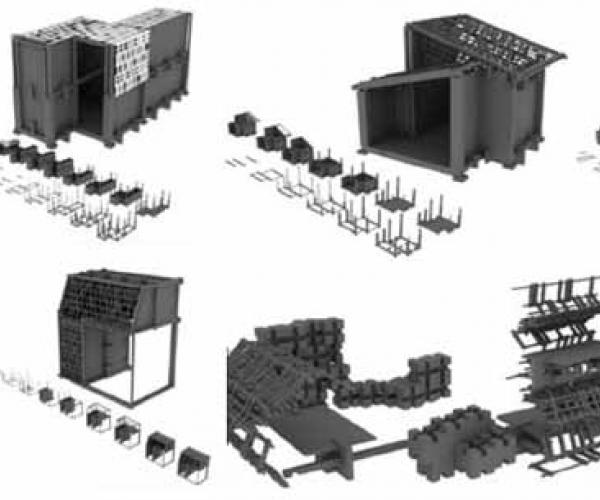DIGITAL CATALOGUE
: A computational implementation of Korean joinery system in the design of a transformable disaster shelter
With the help of Building Information Modelling (BIM), the digital catalogue of all the 44 components of Korean joinery system is developed for the application of their tectonic principles in the design of a transformable disaster shelter. Based upon the components of three primary bracket styles (Jusim-Po, Ik-Gong, and Da-Po) of traditional Korean joinery system in the catalogue, the parametric modifications of the components and their rearrangements are performed for various iteration of the disaster shelter. The usage of Korean joinery system in assembling and disassembling the components enhances the transformability and the reusability of the shelter. This paper demonstrates the computational implementation of Korean joinery system and the design process of a transformable disaster shelter.
DETAILS
- Jason J. KIM1 and Hyoung-June Park
- Completed
- Design Future(s) Lab
- Honolulu, Hawaii
DISSEMINATION
DESCRIPTION
Our understanding of where we live
is not so philosophical but rather pragmatic
Understanding urban environment with quantifiable measures has been the source of debates
Well then becomes the one of heated discussions … now possiblly the one of main trends


